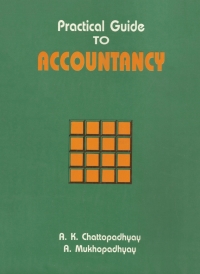Question
The Bold sections are the given questions needed answered, here is the context: Thank you! Background In Chapter 17 you learned that some companies use
The Bold sections are the given questions needed answered, here is the context: Thank you!
Background In Chapter 17 you learned that some companies use excess cash to buy long-term investments (assets on the balance sheet). The investments may be fixed income securities (debt instruments), equity securities (ownership instruments) or derivative securities (hedges or speculation). You learned that how the investments are recorded on the financial statements is dependent on the facts of each investment purchase. Debt securities may be classified as held to maturity, available for sale or trading. Equity securities are recorded on the balance sheet based on the percentage of ownership. You further learned that the original cost of some of those investments may be required to be adjusted to fair value in subsequent periods.
Required Wasting Cash, Inc. purchased the investments described in items 1 through 3. Using the attached template, show how each investment would impact/change Wasting Cash, Inc.s financial statement (statement of cash flows, regular income statement and balance sheet). Indicate each account name and the related $ increase (decrease) for that account for each financial statement that the transaction effects (round all $ answers to the nearest dollar).
- Wasting Cash, Inc. has significant excess cash and purchased an Apple 4-year, 2.5% Coupon, $150,000 par value bond. The Apple bond pays interest annually and was purchased when the YTM (bond market rate of interest) was 3.75%. Wasting Cash, Inc. paid $143,154 for the Apple bond on January 1 of this year and intends to hold the bond until maturity. Wasting Cash, Inc.s year end is December 31. At December 31 of this year, the fair value of the Apple bond was $149,500. How does this transaction affect Wasting Cash, Inc.s financial statement in year one of the purchase (use attached template)? [Hint; you should create a bond amortization schedule for the Apple Bond to correctly determine the financial statement amounts.]
- Wasting Cash, Inc. purchased 6,000 common equity shares of Really Big Opportunity Company (RBOC) who has 55,000 shares of issued and outstanding common stock. Wasting Cash, Inc. paid $348,000 for the RBOC shares on January 1 of this year and at the end of December 31 of this year RBOC reported an annual net loss of $4,000,000. Also, RBOC paid a $4 per share cash dividend on December 31 when RBOCs market price per share was trading at $48. Wasting Cash, Inc. does not believe there is a short term profit motive when it decided to purchase RBOCs shares. How does this transaction affect Wasting Cash, Inc.s year end December 31 financial statements for this transaction (use attached template and round any percentages to 4 decimal places, for example .1479532 would be 14.80% for 4 decimal places).
- On January 1 of the current year Wasting Cash, Inc. invested in ASP Industries by acquiring 30% of ASPs outstanding stock for $21,500,000. At the end of the current year (December 31), ASP Industries reported net income of $5,000,000 and paid cash dividends totaling $1,000,000. At December 31 ASP Industries had a market value of $75,000,000. How does this transaction affect Wasting Cash, Inc.s year end December 31 financial statements for this transaction (use attached template).

Step by Step Solution
There are 3 Steps involved in it
Step: 1

Get Instant Access to Expert-Tailored Solutions
See step-by-step solutions with expert insights and AI powered tools for academic success
Step: 2

Step: 3

Ace Your Homework with AI
Get the answers you need in no time with our AI-driven, step-by-step assistance
Get Started


